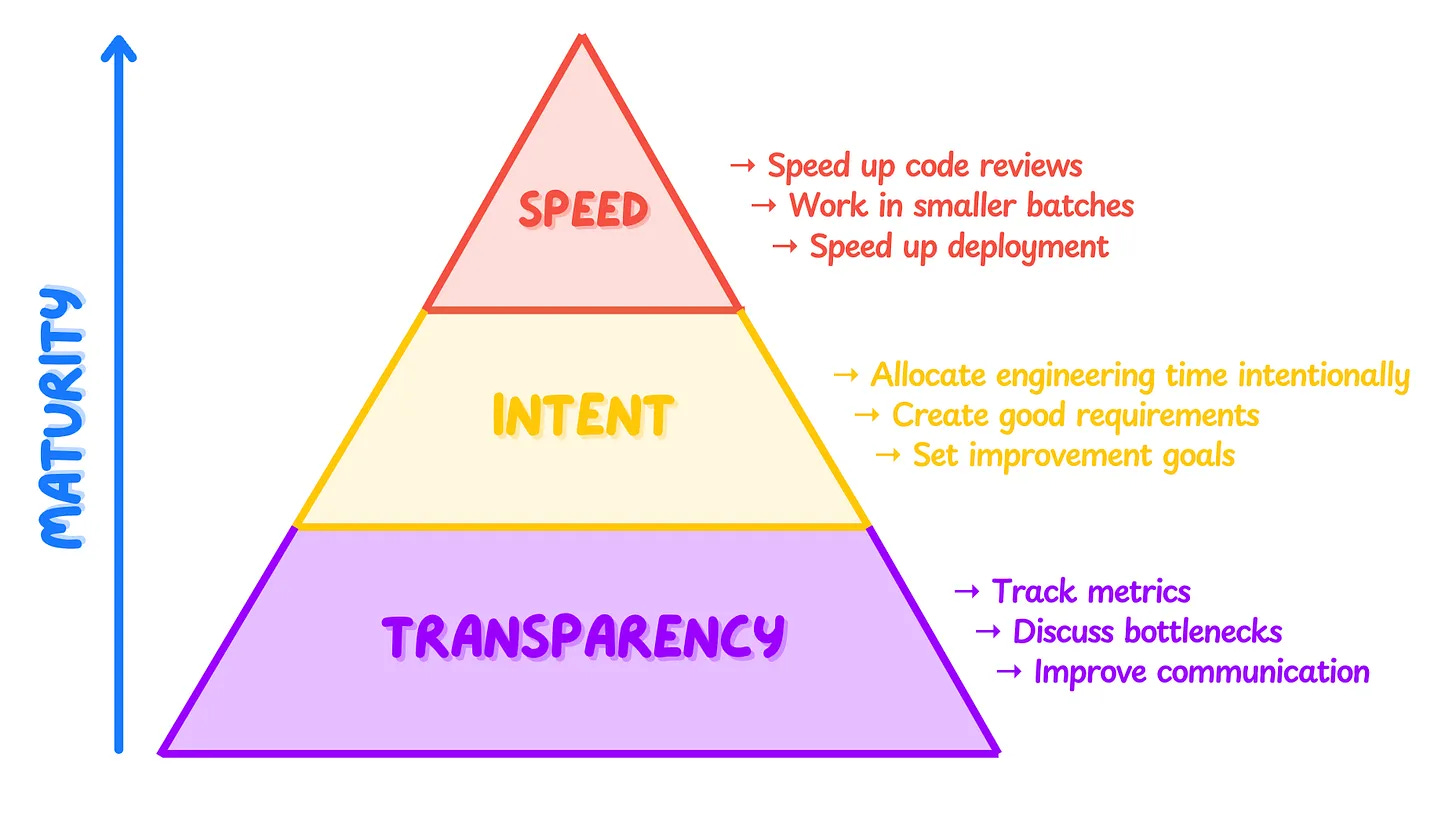Notes: June 16, 2025
How to achieve engineering maturity; The messy middle for engineering managers
#1
Transparency → Intent → Speed:
Transparency — is about being aware of what’s going on, and creating the correct feedback loop to discuss and design improvements.
Intent — Transparency enables intent. The second clear trend that comes out is that teams that are intentional about parts of their engineering process are rewarded.
Speed — is the tip of the pyramid. Going fast is only helpful and sustainable when you are going in the right direction (intent) and you have a good feedback loop to steer your practices if needed (transparency).
Good teams are fast, but fast teams are not necessarily good!
(Luca Rossi / January 15, 2025 / Refactoring.fm / permalink)
#2
"Messy middle"—that space where you're both leading a team and reporting to senior executives.
It's a position that requires a delicate balance, a nuanced understanding of people, and the ability to adapt your approach depending on who you're interacting with.
When you're leading a team of managers, you're not just responsible for their output—you're stewarding their hopes, dreams, and professional growth.
Creating opportunities for your team members to shine is key. Whether it's through challenging assignments, public recognition, or simply giving them the space to lead, it's important to be everyone's cheerleader.
Leadership can be lonely, and it's easy to get lost in the needs of others. Remember to carve out time for your own development and well-being.
Managing up to senior executives is a different beast altogether. SVPs and C-suite executives are often focused on the bigger picture—the strategic direction of the company, high-level results, and key business outcomes.
Different executives have different styles, and part of your job is to adapt your approach to meet them where they are. Some may prefer high-level summaries, while others might want to dive into the details.
The ability to change your style and delivery based on the person you're talking to is crucial. It's about meeting people where they are—whether they're on your team or in the executive suite.
This means being flexible, not just in how you communicate, but in how you lead. Some team members may need more guidance, while others thrive with autonomy. Similarly, some executives might value data-driven discussions, while others are more swayed by narrative and vision.
Embrace feedback as a way to grow—both for yourself and your team. Encourage open dialogue, and be receptive to criticism. It's not always easy, but it's through constructive feedback that we become better leaders.
This decision-making process often involves considering the broader implications of a situation. Will standing your ground on this issue benefit your team in the long run? Is it aligned with the company’s goals? Sometimes, it's better to let go and focus your energy on what truly matters.
It's a privilege to be in a position where you can influence the professional lives of others. But with that privilege comes the duty to lead with integrity, empathy, and a focus on the long-term success of your team. Your leadership has a direct impact on their satisfaction, growth, and career trajectory.
(Amy Crook / August 15, 2024 / LinkedIn / permalink)


